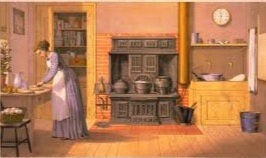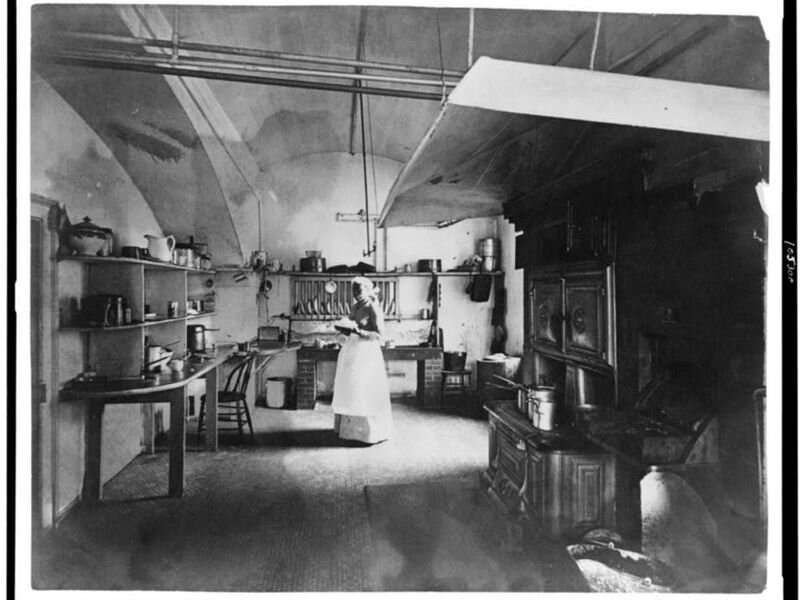Grandma’s Kitchen
/House plans are always changing, from multiple small rooms in Victorian homes to open-plan modern houses, the way we live in an era is often reflected in the houses we’re building. In days gone by feeding a family was an essential role for the woman of the house – now that statement may draw ire from today’s women’s movement but history is history.
Before frozen foods and microwaves, meals – I mean the kind of meals you have to eat if you spend your days in the field or working stock – those meals took time to prepare. Large families enlisted daughters’ help and the kitchen became a natural gathering place.
As I’ve written about Plateau families, I’ve tried to research many historic aspects of the home, especially kitchens. Kitchens often had a bed in them; they always had a big table that would accommodate the whole family for meals, serve as school desk for children, cutting table when Mom wore her seamstress hat and operating table in an emergency. Oh if those old tables could tell their tales! And kitchens have long been the heart of the home.
Hot meals were sometimes the minor part of the warmth that the kitchen offered because comfort and advice could be found there and always a heaping helping of love.
Furnishings in those homes were seldom store-bought and that essential table was something every novice carpenter could build. Without running water, buckets were a part of the kitchen tools. There was always a youngster assigned to keep buckets of fresh water at the ready for cooking and cleaning. One furnishing that’s completely disappeared from our kitchens is the dry sink. This table had a recessed portion that would accommodate a basin for water to be used in washing food or dishes; there might be a slightly higher shelf that could be used to drain the cleaned items. Just as our sinks today come in a variety of configurations, dry sinks were sometimes wide enough for two water basins, sometimes half lowered and half raised. The practicality of this furnishing amazes me – and if you’ve ever worked in a dishpan that was sitting on your countertop, you too will appreciate it.
It wasn’t just Mama that lent warmth to these old kitchens; the ever-present wood stove, fired everyday to cook the family’s meals, made its own contribution to the ambiance. Having grown up enjoying a stove, I’ve mentioned here before that I often can’t feel warm until I can stand before a real fire. How much more true would that be in a home with unheated bedrooms; when going to the potty meant a trip down down a warn path to the out-house in sunshine or rain. I’m thinking a straight back chair sitting behind the old stove would be pretty welcoming.
THe White House Kitchen in 1890
Of course hanging out in the kitchen often meant you were handed a pairing knife and bowl of potatoes or bag of chestnuts needing cracking. But then it also meant getting one of the first cookies that came out of the oven.





